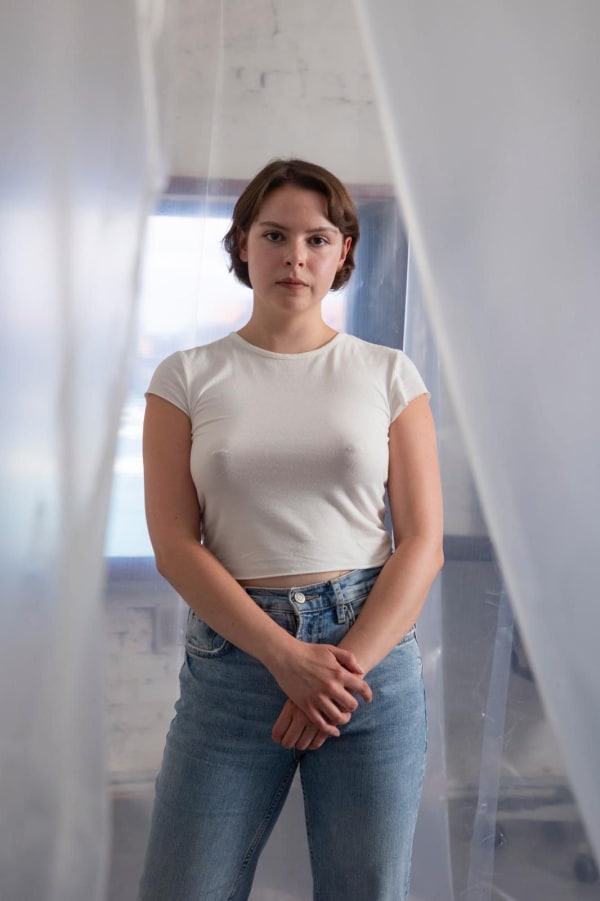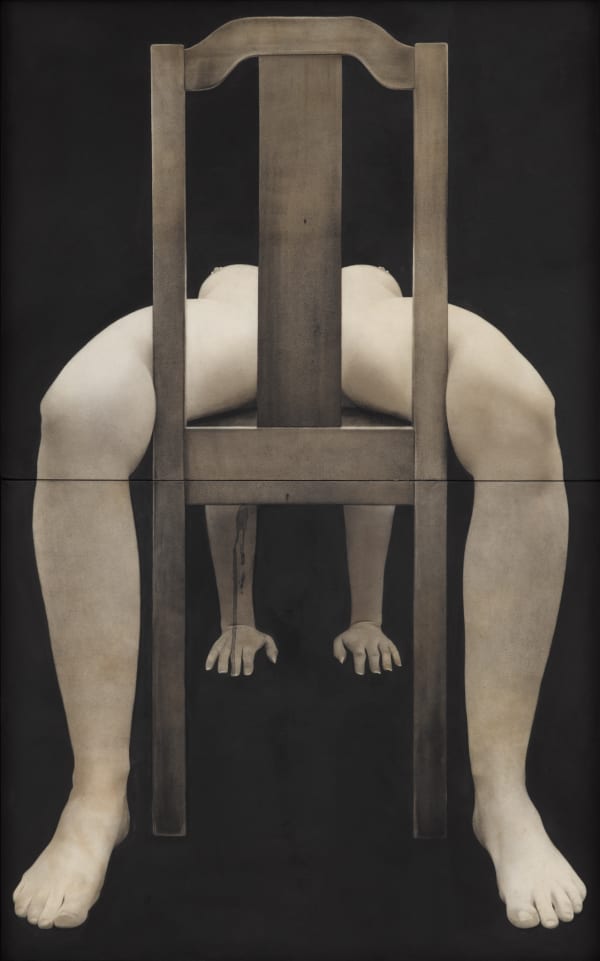Saskia Colwell: Skin on Skin
Victoria Miro is delighted to present Skin on Skin by London-based artist Saskia Colwell. In 2019, the gallery established a studio space in Venice for invited artists to spend extended time in the historic city and make new bodies of work. During a two-month residency in Spring 2024, Saskia Colwell began a series of charcoal works on vellum which she later completed in her London studio.
The new body of work in Skin on Skin explores themes of voyeurism, intimacy and representation. The interplay between the softness of charcoal and the organic quality of vellum creates a close connection to the human body in images which question norms surrounding female representation and contemporary issues of censorship and agency.
Saskia Colwell’s works deliberately blur stylistic, visual, and formal lines, as Hannah Hutchings-Georgiou defines in a newly commissioned essay: ‘Existing at the interstices of the private and the public, the intimate and the distant, the licit and the illicit, the delicate and the crude, the classical and the contemporary, Colwell’s drawings profess innocence even when they are ripe with knowing. Bordering on sculpted exactitude when completed in the softest of chalks and charcoal powder, her work delivers one thing, only to dare us to unwrap, to see, to touch, another’.
About the artist
Born in 1999 in London, where she currently lives and works, Saskia Colwell graduated from the Masters Painting Programme at the Royal College of Art in 2023. In 2022 she completed a BA (Hons) in Painting at the Slade School of Fine Art and, in 2018, the Foundation Year at the Royal Drawing School.
Her work has been included in several group exhibitions including LEDA and the SWAN: a myth of creation and destruction, curated by Minna Moore Ede and presented by Vortic in collaboration with Victoria Miro, London (2024), VAMPIRE::MOTHER curated by Jasmine Wahi in collaboration with Anat Ebgi Gallery, Los Angeles (2024), Conscious Unconscious at Pippy Houldsworth Gallery, London (2023) and Summer Lovin’ curated by Joan Tucker and Henry Relph at Stems Gallery, Paris (2022). Colwell’s work is in a number of private collections.
-

Announcing representation of Saskia Colwell
March 20 2025We are delighted to welcome Saskia Colwell to the gallery. The London-based artist’s first solo exhibition with the gallery, Skin on Skin , was recently...Read More -

Saskia Colwell: Skin on Skin is featured in Wallpaper*
February 24 2025An arched torso bows towards us from a slender, arrow-slit-sized canvas: the planetary outlines of breasts, taut white skin, the inner press of a belly...Read More
